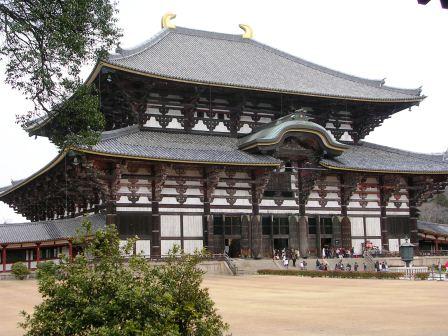Japan
Nara, Land of the Heavenly Deer

Marauding ruminators
Just a short ride on Japan’s seamless rail system from Kyoto lies the enchanting city of Nara. As the first-ever capital of Japan, Nara played a crucial role in shaping the nation’s history. It was the starting point of the Silk Road and the location where Buddhism first arrived in Japan in AD 710. Visitors to Nara can easily enlist free student-guides—college students eager to practice their English—offering an insightful and rewarding tour experience.

The largest wooden temple, or at least one of them
According to legend, the mythical god Takemikazuchi arrived in Nara on a white deer to guard the city, elevating deer to sacred status. Today, tame deer roam freely throughout the town, especially in Nara Park. Vendors sell shika sembei (deer biscuits) for tourists to feed these revered animals. However, once you offer them food, their demeanor quickly shifts from gentle and charming to assertive and ravenous. Some deer have even learned to bow in response to tourists, but most will jostle, nudge, and even nip at you for treats.
Despite the thousands of biscuit-loving deer in Nara, the streets remain remarkably clean. This is thanks to groups of dedicated locals—armed with dustpans and brushes—who methodically collect and dispose of deer droppings in a rhythmic, almost ceremonial fashion.
Nara is home to eight remarkable temples, shrines, and ruins. These ancient sites, alongside the Kasugayama Primeval Forest, form the "Historic Monuments of Ancient Nara," collectively recognized as a UNESCO World Heritage Site.
Nara is an unforgettable destination that should be experienced at least once. Join me on the next leg of our journey across Japan!